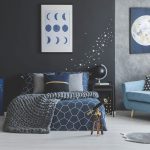Decide on Design Elements
Before you start remodeling the bathroom, choose a design that fits your vision, as well as your DIY skill set. There are many different ways to approach this project, ranging from repainting and swapping out the vanity to gutting the space and starting from scratch. Here are a few details you absolutely need to nail down before you begin your bathroom renovation:
- Color scheme: Interested in a modern farmhouse look? Or are you looking for a clean, contemporary design to match the rest of your home decor? Find inspiration photos for your vision ahead of time to make sure your new bathroom tiles don’t clash with your choice of paint.
- New fixtures: Will you replace your shower or tub? Are you installing a new sink? Replacing one or both of these fixtures will add to your project’s timeline and budget.
- Storage spaces: Where will you keep your towels and toiletries post-remodel? If you’re removing a closet to expand the room, make sure you have shelving or cabinets to make up for the lost storage space in your bathroom.
- Location of utilities: Do you know where the electrical wiring and plumbing pipes are located? Keep these areas marked to avoid damaging these hookups and having to make expensive repairs.









